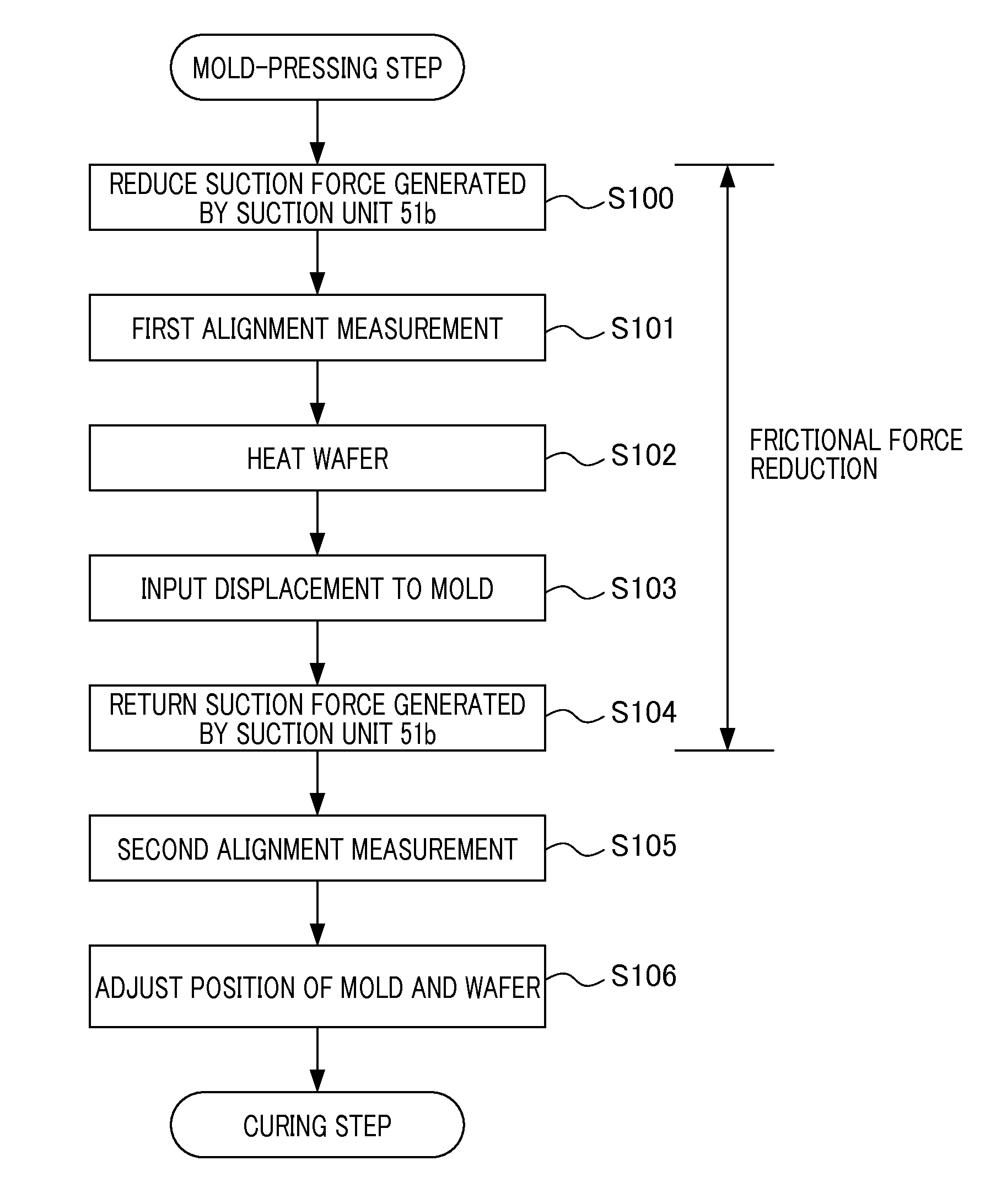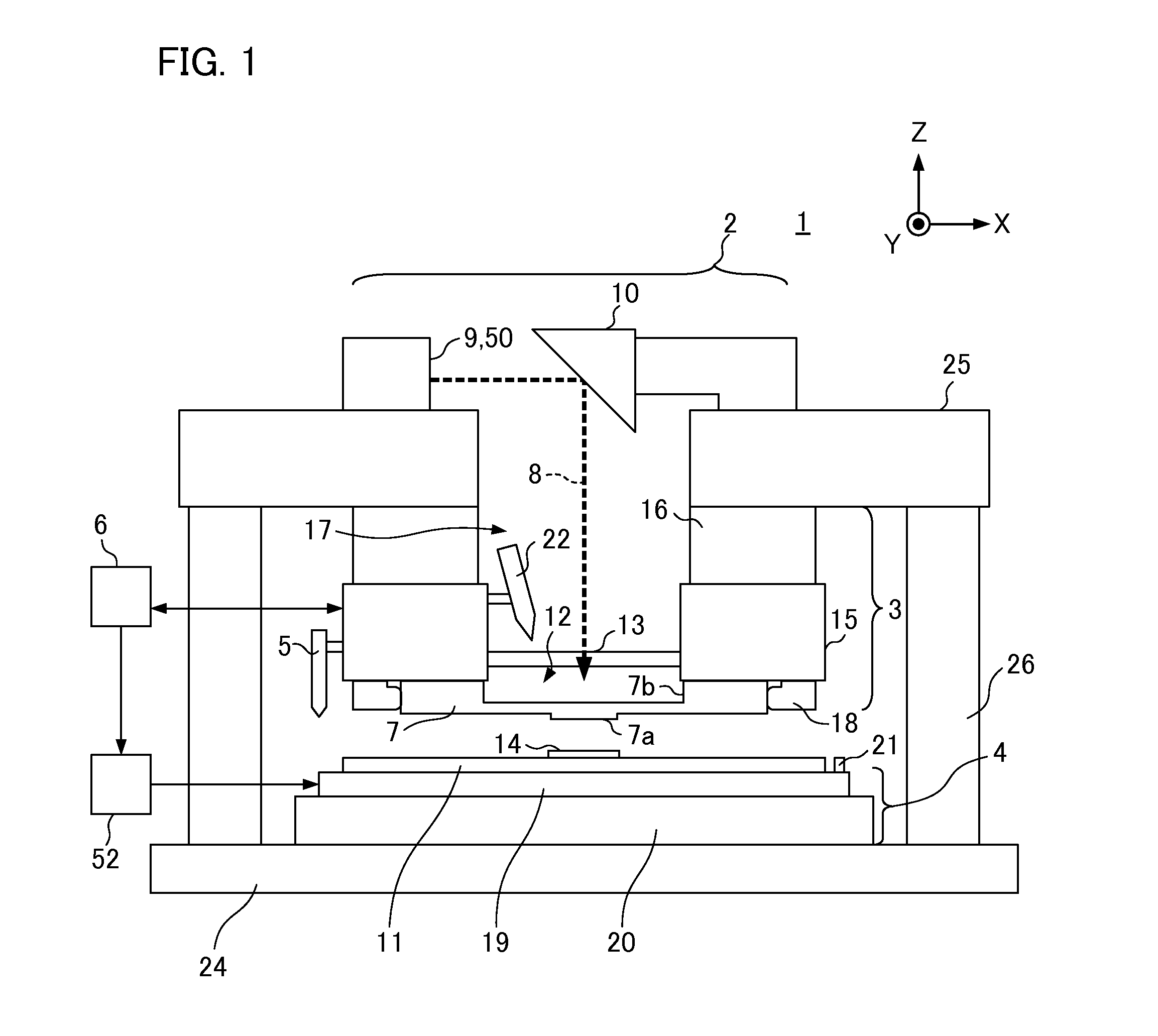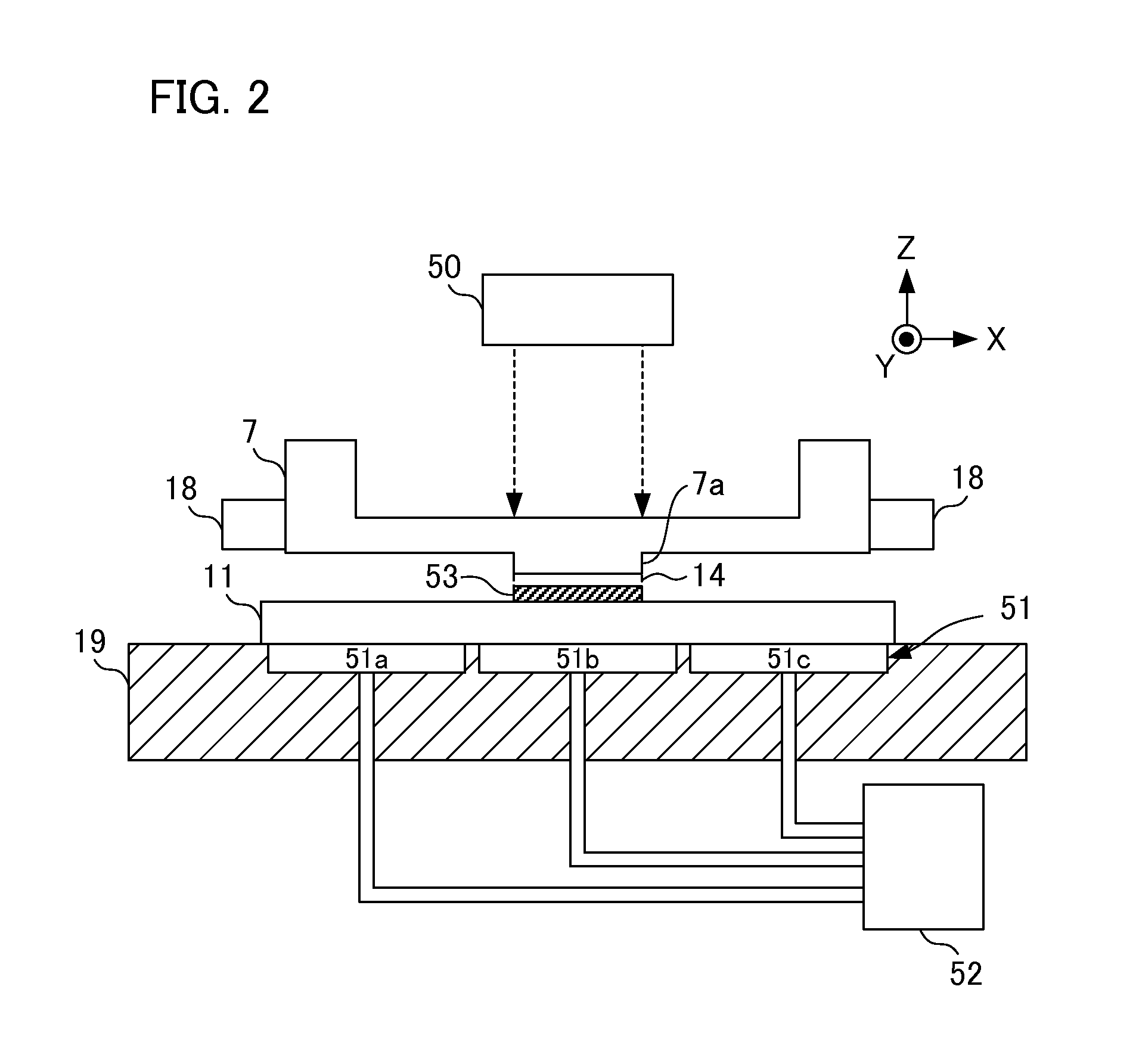Imprint method imprint apparatus, and article manufacturing method
a technology of imprinting apparatus and printing method, which is applied in the direction of semiconductor/solid-state device testing/measurement, semiconductor/solid-state device details, instruments, etc., can solve the problems of affecting the accuracy of superposition. , to achieve the effect of improving the superposition accuracy
- Summary
- Abstract
- Description
- Claims
- Application Information
AI Technical Summary
Benefits of technology
Problems solved by technology
Method used
Image
Examples
first embodiment
[0019]First, a description will be given of the configuration of an imprint apparatus according to a first embodiment of the present invention. FIG. 1 is a schematic diagram illustrating the configuration of an imprint apparatus 1 of the present embodiment. The imprint apparatus 1 is an apparatus that molds an uncured resin on a wafer (on a substrate), i.e., a substrate to be treated, using a mold, to thereby form a resin pattern on the wafer, which is used in the manufacture of devices, such as semiconductor devices, and the like, as articles. Note that the imprint apparatus of the present embodiment is an apparatus employing a photo-curing method. In the following drawings, a description will be given in which the Z axis is aligned parallel to the optical axis of an irradiation system that irradiates a resin on a wafer with ultraviolet light, and mutually orthogonal axes, X and Y, are aligned in a plane perpendicular to the Z axis. The imprint apparatus 1 includes a light irradiat...
second embodiment
[0036]Next, a description will be given of an imprint apparatus according to a second embodiment of the present invention. The imprint apparatus of the present embodiment has the same configuration as that of the first embodiment, but the sequence of operations from the mold-pressing step to the curing step is changed. FIGS. 4A and 4B are flowcharts illustrating the sequence of operations from the mold-pressing step to the curing step performed by the imprint apparatus 1 according to the present embodiment. First, in the example shown in FIG. 4A, after the mold-pressing step, the control unit 6 causes the magnification correction mechanism 18 to perform the displacement input to the mold 7 in step S103, in the sequence of operations of the first embodiment shown in FIG. 3, after the second alignment measurement in step S105 (step S205). Here, given that the alignment measurement in step S201 is the first alignment measurement, a step corresponding to a step S105, shown in FIG. 3, is...
third embodiment
[0038]Next, a description will be given of an input apparatus according to a third embodiment of the present invention. In the imprint apparatus of the present embodiment, the configuration of the suction units 51 provided in the wafer chuck 19 according to the first embodiment is changed. FIG. 5 is a schematic cross-sectional diagram illustrating an enlarged portion of the suction unit 51 (51a) provided in the wafer chuck 19 according to the present embodiment. The suction unit 51 has a plurality of suction pins 60 within the suction region, and a low-friction member 61 made of a low-friction material having a low friction coefficient against the wafer 11 is provided at the tip surface of each suction pin 60, i.e., the surface in contact with the rear surface of the wafer 11. Examples of such a low-friction material include DLC (diamond-like carbon). As described above, a frictional coefficient of the contact surface between the wafer chuck 19 and the wafer 11 is reduced, and thus,...
PUM
| Property | Measurement | Unit |
|---|---|---|
| shape | aaaaa | aaaaa |
| static frictional force | aaaaa | aaaaa |
| frictional force | aaaaa | aaaaa |
Abstract
Description
Claims
Application Information
 Login to View More
Login to View More - R&D
- Intellectual Property
- Life Sciences
- Materials
- Tech Scout
- Unparalleled Data Quality
- Higher Quality Content
- 60% Fewer Hallucinations
Browse by: Latest US Patents, China's latest patents, Technical Efficacy Thesaurus, Application Domain, Technology Topic, Popular Technical Reports.
© 2025 PatSnap. All rights reserved.Legal|Privacy policy|Modern Slavery Act Transparency Statement|Sitemap|About US| Contact US: help@patsnap.com



